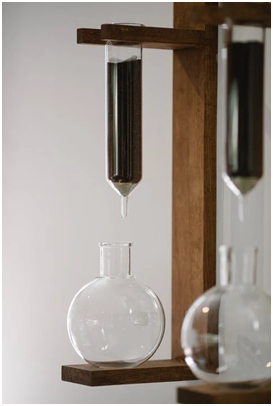Ever wondering about the beautiful glass bottles displayed in the malls? Or maybe you went into your friend’s house and noticed this beautifully designed glass bottle that captured your attention.
Making glass bottles takes a series of reheating, shaping, and cooling. Nevertheless, glass bottle manufacturing is one of the most common things in the market nowadays.
Depending upon the occasion, the use of different kinds of glass bottles is timeless and adds sophistication to your taste. If you are very particular when it comes to dining, using a well-designed glass bottle will add art along with other silverware.
Making your design of glass bottles is fun. The art of creating your bottles will give you a sense of accomplishment and satisfaction.
However, the question of “how are glass bottles made?” rings a bell to those who are interested. While it may be true that planning is the basic thing before accomplishing something, the feasibility depends upon the availability of resources.
There are two things involved in making glass bottles. The first is Blow and Blow, and the second is Press and Blow. Depending upon the material being used, each process adheres to its purpose.
A mixture of different raw materials like limestone, silica (sand), soda ash, or a molten recycled glass called cullet, is what makes up a glass bottle. The most popular glass bottles are made of soda-lime glass which is perfect for beverage and food containers.
Blow and Blow
If you plan on making glass bottles with narrow containers, the best option for you is the Blow and Blow process.
Using an Individual Section (IS) machine, molten glass gobs are placed inside a machine using gravity. Compressed air pushes the parison to create the basic shape. After making the initial design, the parison is then reversed and reheated until forming its final shape.
Compressed air plays an important role in making the final glass bottle design. It makes the final features of the glass bottle and gives its unique shape. If you plan on making glass bottles with different thicknesses, the Blow and Blow process is the best.
Press and Blow
If you want to go and try the conventional way of making glass bottles, the Press and Blow process is for you. Most glass bottles are made from the Press and Blow process.
Still using an IS machine, the molten material is subdivided into a series of containers that are shaped according to its design. Using a shearing blade, the desired glass length is cut into equal sizes.
With gravity, the gob drops into the machine where a metal plunger is then used to compress the gob into the mold. By slowly taking the mold’s shape, a parison is made.
After taking the shape of the initial mold, the parison is reheated to become soft and compressed air blows it to make the final glass form.
The press and blow process is commonly used in making wide-mouth jars and bottles. The glass bottle’s wide shape gives enough room for the plunger to get inside.
Final Steps
Despite the technique used in making a glass bottle, the containers from the initial process of blowing are placed inside an Annealing Lehr.
The temperature is set to approximately 1500 F then slowly brought down to less than 900 F. The process of reheating and slowly bringing down the temperature will allow the glass to cool down gradually, adding its durability.
The use of polyethylene or tin oxide as an external coating will also help prevent the glass from breaking. To prevent the tin oxide from getting worn out, a hot end treatment is used. A coating of polyethylene or tin oxide helps prevent each bottle from sticking to one another and reduces the instances of abrasion.
To prevent the presence of a hazy crystalline residue in the glass bottle, Internal Fluorination Treatment (IFT) is done. Blooming is common especially with Type III glass, hence, IFT is necessary to convert Type III glass into Type II.
A thorough inspection of the finished product decides whether the newly-made glass bottles are good for shipping. As each bottle leaves the final stage of cooling from the lehr, it passes through electronic inspection. The machine will differentiate those who are qualified to be shipped and those that are needed to be recycled.
Aside from these, glass bottle manufacturers also practice proper health protocols especially in this time of the pandemic. An example of this is requiring their workers to wear face masks and use hand sanitizers if they cannot immediately wash their hands. These are crucial to maintaining a productive and healthy workforce to produce quality glass bottle products.
Conclusion
After completing the initial steps in making glass bottle designs, each bottle is then transferred into an annealing lehr. While inside the lehr, the bottles are reheated then gradually cooled.
Leaving the bottles to cool gradually will prevent them from becoming brittle, making fewer instances of getting cracked or shattered. After the process of gradual cooling, each bottle is inspected to ensure quality.
Dents, cracks, bubbles, or other extraneous deformities will subject each bottle to recycling. The cullet is then used again to form new sets of bottles, making the process a cycle.
The remaining bottles then proceed to the package and are sorted accordingly. Bottles of different sizes and shapes are now ready to be shipped.
Knowing the process of making glass bottles helps address the curiosity of those who want to make their design. And they have to understand that quality and design also influence consumers’ purchasing decisions. Purchasing cheaper glass bottles will cost customers more than buying a durable one.
Using different materials contribute to the quality of glass bottles. With the proper techniques in molding, the bottle’s durability dramatically increases. It is important to consider the factors that will contribute to the bottle’s durability.
Therefore, it’s important to learn glass bottle design and the production process to offer premium glass products.

